After a keenly contested Presidential election, the result of which came under a serious cloud when Dr Ashraf Ghani Ahmedzai surprised the odds-on favourite Dr Abdullah Abdullah by crossing the half-way mark, it looked as though the all-important political transition in Afghanistan was unravelling, and with it the future of that country. But Afghan pragmatism, some hectic shuttle diplomacy by the Americans and, most of all, the sagacity of the two leading contenders, ensured a far-reaching political compromise that paved the way for a smooth political transition from one elected government to another, a first in Afghan history. Within a day of the new dispensation assuming office, the Bilateral Security Agreement (BSA) with the US and NATO was signed, thereby allowing foreign forces to stay on in Afghanistan and provide the much needed security support to the Afghan forces for at least another two years, and maybe even beyond that until 2024. The US, its allies and other countries, including India, have also reiterated their commitment to providing critical financial and military support to the new Afghan government.
Political Reforms
Despite all the positive developments of the last couple of weeks, the situation in Afghanistan remains fragile. The Ashraf-Abdullah combine literally has its work cut out for it, not just to make sure that the political system continues on the rails but also deliver a modicum of governance to the people. Both these leaders will need to put the bitterness generated by the election behind them in order to be able to work together. An even more important, if also difficult, task before them will be to get their followers and supporters to get over their rivalries, turf wars and distrust of each other in the interest of Afghanistan. Although both Dr Ghani and Dr Abdullah have shown enormous statesmanship to agree on a power-sharing deal, unless this spirit of accommodation and adjustment can filter down to their supporters, the entire political arrangement could collapse. In other words, while the two main protagonists understand that they cannot keep sniping at each other because this will tantamount to playing in the hands of the enemy (read Taliban and their main backers, Pakistan), their followers might not be as evolved and savvy as them.
Some amount of political tussle is inevitable, even desirable, to forge a democratic political culture in a country where democracy is still in its infancy. As long as this political tug-of-war doesn’t degenerate into armed conflict between contending players and doesn’t affect the Afghan state’s ability to protect itself, it shouldn’t be a problem. At the same time, even though a power sharing deal has been put in place, it needs to be formalised. Necessary reforms will need to be made in the constitution over the next couple of years to make the post of Chief Executive Officer into a de jure Prime Minister. Alongside, other administrative and political reforms will need to be made in order to devolve power to the provinces and end the over-centralisation that is currently the norm. Most of all, solid electoral reforms will have to be put in place so that the sort of controversy that erupted in the last election is avoided. Quite frankly, the last election didn’t really inspire much confidence in the election process and Afghanistan simply cannot afford to go through another controversial election –both the 2009 and 2014 elections were tainted – if democracy has to have any chance of survival.Even with the best of intentions, fixing the political and administrative system will take some doing. But if anyone is up to this task, it is the cerebral President Ashraf Ghani and the astute CEO, Dr Abdullah.
The Economic Bind
Politics is however just one leg of the tripod on which the future of Afghanistan rests. The other two are security and economy, which are going to be a lot more difficult to fix than the political system. To be sure, the economy and security situation are inextricably linked to each other. With security, there can be no economy; conversely, if the economy doesn’t pick up or tanks, security will become impossible to manage. Ultimately, Afghanistan will have to stand on its own and cannot depend on an endless and limitless flow of funds from foreign donors. For the foreseeable future, of course Afghanistan will continue to depend on other countries to meet its expenses. As things stand, the Afghan state is unviable and in no position to meet its expenses from its own resources. To make matters worse, the uncertain security situation has resulted in massive capital flight. There is no worthwhile domestic or foreign investment in the country. Massive investment projects are stalled because the investors are in a wait and watch mode. Add to this the end of the expat economy – steady drying up of the money that was flowing into the local economy because of the presence of thousands of foreign diplomats, soldiers, aid workers and what have you – and things don’t look very bright.
Even the Americans have come to realise that they have built an economically unsustainable and unviable state. The big challenge for President Ashraf Ghani will be to rebuild a sustainable and affordable Afghan state. Once again, he is perhaps the best man for the job at hand because of his experience and knowledge of dealing with the economy. Needless to say, the international community will need to financially support and sustain Afghanistan through the process of economic transition. But this process cannot be endless, and even Dr Ghani knows this. What is more, the donors will have to be convinced that their money is being put to the best use and not enriching the top dogs in the government. While some donors like India could fund vital infrastructure and development projects like roads, dams, power networks etc., these will help only to the extent that it will help give a push to the Afghan economy. This assistance won’t solve the problem of how the Afghan state will meet its expenses, for which it needs hard cash.
The Afghan state will have to rejig its revenue model to levy taxes, easier said than done in a country where this concept is alien. As things stand, most of the revenue of the Afghan government comes from customs duties. Other revenue streams will have to be introduced for the Afghan state to stand on its own. Equally onerous will be the task of reducing the role and influence of the narco-economy in the national economy. Some officials have claimed that Afghanistan is on the verge of becoming a narco-state. This needs to be reversed because not only does this have serious implications for the ability of the state to tackle the insurgency (which is being fuelled by the narco-trade) but also it has the potential of undermining the state itself and reducing it into a non-entity by using its money and fire-power.
There are two potential areas which can generate substantial (but perhaps not sufficient) resources: mining natural resources and transit routes. According to some studies, Afghanistan is sitting on a mountain of precious metals worth over $ 1 Trillion. The harnessing of these two potential sources of revenue will depend in large measure on the security situation. There is also a possibility that if indeed the estimates of natural resources are correct, then Afghanistan could just as easily become a target of hostile powers wanting to control these resources. Even otherwise, unless the Afghan state is able to get its act together, these natural resources could turn into a ‘resource curse’ for Afghanistan, depriving it of any chance of emerging as a stable and secure country.
One thing should however be clear: if the funds stop flowing in from donor countries, the Afghan state could easily collapse like a house of cards. One of the abiding lessons of history in this part of the world is that when a state becomes incapable of paying its soldiers and its staff, it collapses. But here’s the thing: if the current dispensation folds up because it cannot pay its bills, the guys – both local and foreign (once again read Pakistan) wanting to pull it down have even less of a chance in being able to manage the Afghan economy. In fact, for precisely this reason, it would actually make a lot more sense for the Pakistanis and the Taliban to let the international community and the current Afghan dispensation do the heavy lifting on the economy and make it sustainable. But if such good sense had prevailed, Afghanistan wouldn’t ever be in the dire straits that it has been in over the last four decades.
The Security Challenge
In a somewhat perverse sense, the Afghans should be thankful to the savage Islamic State (IS) in Iraq and Syria, for convincing the world of the peril of abandoning Afghanistan in haste either because of the treasure being expended in this country or because of the fatigue of war. The alarming rise of the IS and the barbaric brutalism (quite similar to that of the Taliban) that it has come to represent has played a big role in convincing the US and its allies that a hasty withdrawal from Afghanistan could see a Taliban comeback. As far as the Afghans are concerned, the signing of the BSA is very welcome because it is seen as an emphatic statement by the US-led international community of its commitment to Afghanistan.
The presence of the foreign forces is however something of a double-edged sword. One way of looking at this issue is that it will continue to serve as a red rag for the Taliban who will then make this an excuse to continue with their destructive and diabolical actions inside Afghanistan. Conversely, it can just as well be argued that even if every single foreign solider was to leave Afghanistan tomorrow, the Taliban will still continue with their destructive and diabolical actions. But a more serious argument against the foreign forces is that as long as they remain in Afghanistan, it will keep the Americans and their allies hostage to Pakistan. With the Iranian route closed to the allies, and the Northern Distribution Network in trouble after the problems with Russia, Pakistan remains the only ground route available to supply the troops in Afghanistan. This gives Pakistan a leverage that it will continue to use against the efforts to bring peace and stability to Afghanistan. This means that the very conditions that ensured the failure of the international forces to pacify and stabilise Afghanistan will continue to operate as long as these forces remain present in Afghanistan. It can therefore be argued that it might be better to pull out all foreign forces and then provide assistance to Afghanistan in a way that it is able to combat the covert and overt offensive from Pakistan. What is more, free of the Pakistani stranglehold, the Americans and their allies will be in a better position to turn the screws on the Pakistanis, which in turn might help the Afghans more than the mere presence of foreign troops in their country.
At another level, however,the presence of foreign troops instils confidence in the Afghan regime, which now has the power of the international community at its back. The support that the foreign forces will provide the Afghan National Security Force (ANSF) in terms of training, capacity building, intelligence support etc. will be extremely useful in combating the Taliban. Equally important is the fact that it will serve as a big obstacle in the path of the Pakistanis who will not be able to interfere and intervene as openly in Afghan affairs on the side of the Taliban as they might have done if the foreign forces were no longer present in Afghanistan. Of course, this doesn’t mean that the Pakistanis will not play the double-game they have been playing ever since 9/11 and the US intervention in Afghanistan. But the Pakistanis will also not be able to play the sort of role they played in the late 1990’s when their officers and soldiers directed and participated in the Taliban offensive. Quite asides the fact that the Pakistan of 2014 is just not the Pakistan of 1994 (when the Taliban first erupted on the scene), even the Afghanistan of 2014 is not the Afghanistan of that time when it was internationally isolated and even ignored. Back in the 1990s, it was easy for rest of the world to turn its back on Afghanistan because as far as the US was concerned there was no international Jihadist movement but only “a few over-excited Islamists”. 9/11 was a rude awakening for the Americans and rest of the West about the threat that these “over-excited Islamists” pose to global peace and security. Unless the US and other Western countries want another 9/11 type attack on their soil, they can no longer afford to ignore, much less abandon, countries like Afghanistan which are in the vanguard in the fight against radical Islam and international jihad.
Just as the international situation and awareness about what Afghanistan is facing is no longer what it was in the 1990s, the Afghanistan of today is also very different from the Afghanistan of 1990s. Since 2001, Afghanistan has undergone a huge transformation, the credit for which is due to the US and its allies who, despite all the mistakes they have made in the security and economic domain, have done a remarkable job in resurrecting Afghanistan after rescuing it from the medieval and barbaric Taliban and their overlords in Pakistan. What also goes in favour of Afghanistan is the fact that unlike Iraq which was divided first in the minds of its people, the Afghans continue to cherish their Afghan identity. Despite ethnic and other differences, Afghans don’t want to see their country Balkanised. In other words, while many Iraqis would be happy to carve out their own independent states, hardly any significant Afghan group wants out of Afghanistan. This sense of Afghan nationalism is an asset that needs to be nurtured and made into a force in the fight against Pakistan-sponsored Taliban.
But fighting the Taliban will require more than just the positives outlined above. The ANSF remains a work-in-progress. It is turning out into a fine fighting force, but will take some more time before it is able to reach a level of preparedness that equips it handle the full spectrum of threats that Afghanistan faces. Unfortunately, until now, the Americans and their allies have built up the Afghan army as a sort of armed constabulary or a para-military force. As long as the foreign forces were present in big numbers, it could be argued that the Afghans didn’t need anything more than an armed constabulary as an army. But with the withdrawal of bulk of foreign forces looming large and with the ANA taking over security function and even conducting operations on its own, that old argument no longer holds any value. If anything, keep the ANA under-equipped is turning to be counter-productive because it is undermining its ability to tackle the threats that a foreign-sponsored insurgency poses.
What this means is that like any other regular armed force, the ANA must have air power at its command. This doesn’t mean equipping it with fourth generation fighters and AWACS. But at the very least, a couple of dozen second generation fighters which can provide ground support to troops are necessary. Alongside, helicopters for troop infusion, medical evacuation and also providing close air support will act as huge force multipliers for the ANA. At the ground level, the ANA has to be equipped with artillery (both light and heavy) which is suitable for mountain warfare. Armour is another area where the ANA is found desperately lacking. All this equipment and a service network needs to be created if the ANA is to be able to perform on the ground. Along with firepower and equipment, there are two other areas in which the West needs to build ANA capacity. The first is logistics. This will become extremely critical if the ANA is to be equipped to meeting the full spectrum of threats, including conventional attacks from Pakistan side. The other area is intelligence. While the Afghan intelligence organisation, National Security Directorate, has been quite effective and efficient, there remain serious gaps in its capabilities to provide the sort of intelligence that will assist military operations. This is a critical area in which the Americans can build Afghan capacities to take on the enemy.
Conclusion
It is easy, even tempting, to indulge in doomsday scenarios about Afghanistan. But much of the pessimism that is afflicting analysts is somewhat unwarranted. If anything, the way the Afghan politicians have managed to paper over their differences and bury the bitterness caused by the controversy over the elections, coupled with the grit and determination that the ANA has displayed in fighting the Taliban actually creates a sense of cautious optimism about Afghanistan’s future. This is not to say everything is well in Afghanistan. Far from it, Afghanistan continues to confront monumental problems that will require a lot of doing to overcome. But there is a reasonable chance that the Afghans might be able to tackle many of these problems, of course with the economic assistance and military aid from their friends and allies.
Regardless of the amount of money and military assistance that is given to Afghanistan, many of the problems will remain; only they will not be able to overwhelm the country. It is no ones’ case that Afghanistan will transform into a paradise overnight. By all accounts, it will remain volatile and disturbed, perhaps more in the eastern and southern periphery. But abandoning Afghanistan is also no solution. If anything, doing such a thing will only create another Islamic State like entity in the region, which is not in anyone’s interest, except perhaps for countries like Pakistan. Therefore, it is imperative that the Afghans be assisted to fight not just their own war but also the war of rest of the civilised world. The choice before the international community is a simple one: they can either fight this war in Washington or in Wardak, they can fight this war in London or in Logar, they can fight this war in Helmand or in Hyderabad, they can fight this war in Berlin or in Bamiyan and they can fight this war in Paris or in Pul-i-Chakri.
Published Date: 9th October 2104, Image source: http://www.tolonews.com


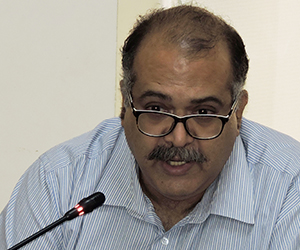
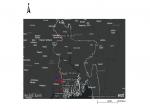



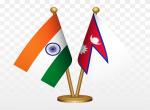
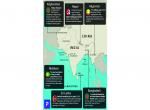
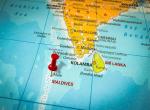

Post new comment